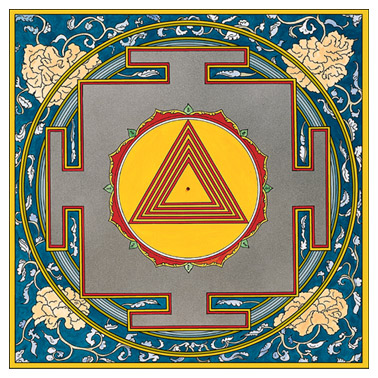
The spine of Sanatana Dharma contains the following
vertebras (ancient texts):
Some Slavic and Sanskrit
words are almost identical. In Slovak, "veda" (knowledge)
means the same as the Sanskrit word "Veda".
The spine of Sanatana Dharma consists of the following vertebras
(ancient texts):
The principal
and not contestable scriptures, or Cosmic Sound of God - SHRUTI
I. Shruti (Sruti), the God's word (the cosmic sound
of Truth that was once heard):
These are the four Vedas:
1. Rig Veda, 2. Yajur Veda,
3. Sama Veda, 4. Atharva Veda
The Vedas are poetical hymns and they have their
subgroups: Aranyakas, Brahmanas and Upanishads.
Aranyakas - they discuss philosophy and
sacrifice; they form part of either the Brahmanas or Upanishads.
Brahmanas - (originated some 900-500 years
before Christ); these are commentaries to the Vedas. Every Veda
has its Brahmana:
Brahmanas:
* Rigveda
- Shakala shakha: Aitareya Brahmana
- Bashkala shakha: Kaushitaki Brahmana
- Tandya Brahmana
* Samaveda
- Kauthuma
- Jayminiya: Jayminiya Brahmana
- Tandyamaha or Pancavimsa Brahmana
- Sadvimsa Brahmana
- Samavidhana Brahmana
- Arseya Brahmana
- Devatadhyaya or Daivata Brahmana
- Mantra or Chandogya Brahmana
- Samhitopanisad Brahmana
- Vamsa Brahmana
- Jayminiya Arseya Brahmana
- Jayminiya Upanisad Brahmana
* Yajurveda
- Kathaka Brahmana
- Krishna Brahmanas
- Shukla: Vajasaneyi Madhyandina, Shatapatha
Brahmana and Kanva: Shatapatha Brahmana
* Atharvaveda
- Paippalada: Gopatha Brahmana
Upanishads:
Upanishads - there are the so-called
"principal Upanishads"; various sources say that they are
11 in number, or even 13 or more. Wikipedia says that the following
11 belong to the class of the "principal Upanishads":
1. Aitareya, 2. Brhadaranyaka, 3. Isa, 4.
Taittiriya, 5. Katha, 6.
Chandogya, 7. Kena, 8.
Mundaka, 9. Mandukya, 10.
Prashna, 11. Svetasvatara
The remembered word of God - SMRITI
The following division is not so unified in comparison
with how the division of the above section (Shruti) is made (Shaktas,
for example, do not consider Devi Bhagavatam to be an upapurana).
II. Smriti - the God's word that was remembered:
1) Four Upavedas and six Vedangas:
A)
1) Ayurveda
- about "science and health", it belongs to Rig Veda; 2)
Dhanurveda - about "military skills", it
belongs to Yajur Veda; 3) Gandharva
Veda - about "art and science", it belongs to Sama
Veda; 4) Arthashastra - "science
about politics and economics" (Atharvaveda).
B)
Six Vedangas - these are the organs of the
Vedas (auxiliary disciplines for understanding of the Vedas):
1) Siksha
phonetics; 2) Vyakarana grammar; 3)
Chhandas prosody (melodies of speech, etc.); 4)
Nirukta etymology; 5) Jyotisha astronomy
and astrology; 6) Kalpa methods for various
rituals.
2) Itihasas (sacred epics)
Ramayana and Mahabharata.
3) Puranas (sacred legends)
A) 18 main Puranas or Mahapuranas
These are also divided into categories (Brahma, Vishnu,
Shiva, Durga).
1. Bhagavata Purana (about life of Krishna, it has
18,000 verses)
2. Vishnu Purana
3. Naradiya Purana
4. Garuda (Suparna) Purana
5. Padma Purana
6. Varaha Purana
7. Brahma Purana
8. Brahmanda Purana
9. Brahma Vaivarta Purana
10. Markandeya Purana
11. Bhavishya Purana
12. Vamana Purana
13. Matsya Purana
14. Kurma Purana
15. Linga Purana
16. Shiva Purana
17. Skanda Purana (81,100 verses)
18. Agni Purana
B) 18 Upapuranas (standing near the
Mahapuranas, but with less relevance: "upa" - near)
These are:
1. Sanat Kumara
2. Narasimha
3. Brihannaradiya
4. Sivarahasya
5. Durvasa
6. Kapila
7. Vamana
8. Bhargava
9. Varuna
10. Kalika
11. Samba
12. Nandi
13. Surya
14. Parashara
15. Vasishtha
16. Devi-Bhagavata
17. Ganesha
18. Hamsa
C) There are also specific Puranas,
for example, Tamil Puranas:
1. Shiva Purana
2. Periya Purana
3. Siva Parakramam
4. Tiruvilayadal Purana
4) Agamas (manuals for sacred
worship)
Ishvara-Samhita
Ahirbudhnya-Samhita
Sanatkumara-Samhita
Narada-Pancharatra
Spanda-Pradipika
There are vaishnava, shaiva, and shakta Agamas.
5) "Six philosophies"
or Shad-Darshana aka "Upa Vedangas"
1. Nyaya - logical approach to spirituality
2. Vaiseshika - it deals with material aspect of
Creation
3. Sankhya - it presents a dualistic concept of Purusha
(soul...) and Prakriti (nature)
4. Purva (or karma) mimamsa - it deals with rituals
and techniques oriented on outward world (out of the body)
5. Yoga - a technique for inward practice
6. Uttara (or sharirika) mimamsa - it deals with
realization of Truth
III. Other texts (derived from ancient sources)
In addition to the above texts, there are many other
books, for example, various Gitas like:
1. Anu Gita (from Mahabharata)
2. Bhikshu Gita (from Shrimad Bhagavata Purana, book
11, chapter 23)
4. Brahma Gita (from Skanda Purana)
5. Shiva Gita (from Padma Purana, book Patala Khanda)
6. Surya Gita, etc.
IV. Texts of spiritual touch
1) Stories of wise recommendations or opinions written
by various authors even recently (for example, Autobiography of
a Yogi by Yogananda; 2) Poetry; 3)
Dramas; 4) Rhetoric.
Some sources with Hindu literature
Rig Veda, Atharva
Veda, Sama Veda, Yajur Veda and Upanishads:
http://www.ishwar.com/hinduism/
Vedas
and other scriptures
Many valuable books are searchable in this library:
http://www.dli.ernet.in/
Markandeya
Purana
Ramayana:
http://hinduism.about.com/library/weekly/extra/bl-ramayana1.htm?nl=1
Back


